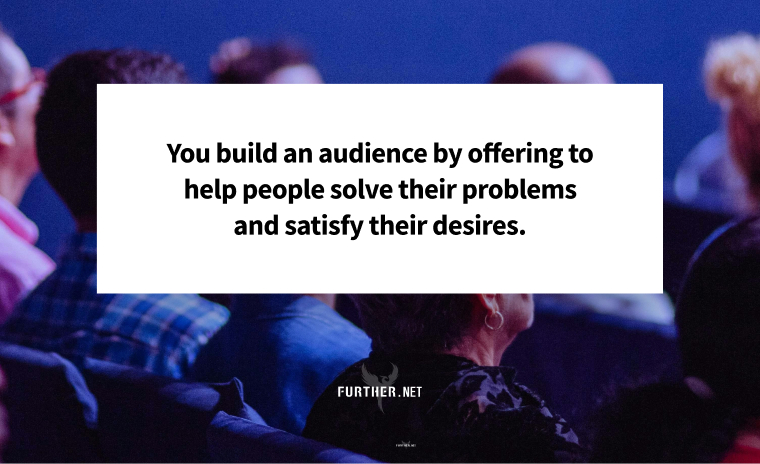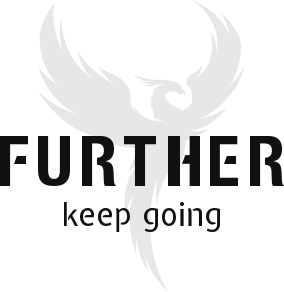
You can’t escape the hype about the creator economy. Build an audience, gain influence, get paid.
The creator economy dates back at least 20 years, however, beginning with “pro” or commercial blogging that emerged around 2005. And most of those who succeeded back then had cut their teeth as freelancers or some other client service role.
As we touched on last time, the toughest part of freelancing, consulting, or any other client services business is getting the clients. It’s not enough to excel at your craft; you have to market your services in a way that gets you the quality of clients your work deserves.
The key is to set up a proactive pipeline that brings a steady stream of prospects. One that brings enough opportunity to give you the luxury of picking only the best projects.
Even better, this pipeline should bring you opportunities beyond client work so you can fully develop your own personal enterprise.
So, what is this approach that brings you high-quality clients, reveals ideas for productized services, and lets you expand your revenue streams?
As you learned last lesson, it’s called audience-first, and it allows you to build the base of your personal enterprise while also leading to advanced opportunities down the road.
Media Not Marketing
Audience-first is essentially a digital media strategy that does what great marketing is supposed to do. It begins a relationship with certain people who come to know, like, and trust you to the point where they want to do business with you in some fashion.
You build an audience by offering to help people solve their problems and satisfy their desires. In effect, you become a mentor to your audience who guides them to success, which is an ideal role to put your crystallized intelligence — or the ability to use the vast set of knowledge and experience you’ve acquired over the years — to work.
So, imagine you’re a mentor in a one-on-one situation. What would the person who is advised, trained, or counseled by you be looking for?
Advice, right? No one wants just raw information.
What they want is meaningful guidance and solutions, initially in the form of actionable advice.
As a mentor, you would deliver that advice in the context of your experience.
Plus, you’d send over relevant news, trends, and “how-to” content that strategically moves your mentee in the right direction.
And that’s precisely what you do with a media approach to marketing. But instead of one-on-one, you perform this role as the leader of an audience looking to be taught to attain their version of success.
The audience-first approach has become synonymous with what’s known as “content marketing” and now is used to refer to creator economy influencers. And that was exactly what I used to build three seven-figure businesses and an eight-figure company between 2007 and 2018.
I started doing content marketing back in 1998 and teaching it in 2006 — two years before it had an accepted name. I’m considered a pioneer in the craft, and it’s now a multi-billion industry.
Why is audience-first the way to go? Basically, it’s because it’s the prospects (the audience) who are in control, not the marketers.
The internet empowers people to create their own buyer’s journey in their way, and on their own terms. And generally, it’s the person with relevant advice who provides value before the pitch that wins the business.
This requires a different way of thinking, and a different approach. Here’s the main thing you need to understand about the audience-first approach: It’s different from traditional marketing, and yet it accomplishes what marketing is supposed to do.
David Beebe, who served as the VP of global creative and content marketing at Marriott International, succinctly sums it up:
Stop interrupting what people are interested in, and become what they’re interested in.
What you really need to do is build an audience that wants to hear from you. This began in the late 1990s with permission-based email marketing, and has evolved into strategies by small businesses that you wouldn’t initially think of as digital media companies.
As I said, what we’re talking about here does what marketing is supposed to do, but it operates in a way where people actually seek it out, instead of trying to avoid it. This is the essence of audience-first. You don’t lead with the product or service — you begin by attracting and serving the needs of your prospects with valuable advice and guidance.
The first step in positioning yourself properly is to understand the problems and desires of your potential customers. And you have to create an experience that begins the process of solving those problems and satisfying those desires before you stick out your hand for payment.
Instead of claiming your expertise, why not become a likable, helpful expert who generously offers to help? Put another way, traditional marketing promises a beneficial experience, while an audience-first approach begins the valuable experience before the sale.
Becoming a “leading” expert is the core of the secret to personal enterprise success. That’s because an audience-first approach allows authority to be demonstrated and earned, rather than just claimed, and results in people following you.
Getting Your Minimum Viable Audience
People naturally ask, how much of an audience do I need? Years ago, I answered this question by coining the term minimum viable audience (“MVA”).
You have an MVA when:
- You’re receiving enough feedback from comments, emails, social networks, and social media news sites in order to adapt and evolve your content to serve the audience better.
- You’re growing your audience organically thanks to word-of-mouth, email forwards, and social media sharing by existing audience members and earned media.
- You’re gaining enough insight into what the audience needs to solve their problems or satisfy their desires with a paid product.
When you’re at the client services stage, you don’t even need to reach MVA status to land clients. But that mindset is what leads to the feast or famine syndrome that you want to avoid. The good news is that the personal enterprise approach gives you an advantage over those looking to go directly to product development as soon as possible.
Audience is the first fundamental of a successful location-independent business, and having one is incredibly lucrative. Imagine being able to bootstrap a seven or eight-figure business thanks to the audience-first approach, and you’ll understand that people are willing to pay a significant sum to get to the MVA point.
Many marketers willingly lose money to acquire customers via online advertising while building a broader audience. That’s because the audience becomes an asset that you can make new offers to repeatedly over time — it’s not a one-shot advertising campaign.
But when you’re first offering relatively high dollar client services, you can afford to advertise on a return-on-investment basis. You’ll actually make a profit off of the clients you attract, even as the broader audience grows and reveals additional offers that can be made in the future.
Follow the Tesla Model
At this point in history, I’m hesitant to use Elon Musk as any kind of example.
Most people now know he’s far from a technical genius, but what he is good at is the intersection of marketing and product development.
Think of this in terms of Tesla’s early business model. The electric car pioneer started out with a high-priced, low-volume specialty car (Roadster) for the super-rich.
This is analogous to a freelance or coaching business that attracts a small number of relatively high-priced clients each month.
Next, Tesla took the revenue from the elite models and developed mid-priced cars (Model S, Model X) for a larger group of well-off consumers.
This would be the productized service phase of your personal enterprise made possible by having a broader audience beyond your bespoke clients.
From the revenue derived from the mid-tier car sales, Tesla entered the mass market with a low-priced, high-volume car (Model 3).
You do the same by discovering the first product to develop based on the feedback you get from moving to and beyond the minimum viable audience stage.
As with Tesla, the prices come down as your volume goes up — but this is where the real money is made, and more freedom gained. You’ll have the option to stop taking clients at this point, or to hire others to deliver the productized version while you focus on sales and developing the next product.
Through each stage of the process, Tesla is acquiring customers and building brand awareness. You’re doing the same thing as both your audience and your business grows. And the audience will keep paying you year after year, leading to more and better opportunities.
Let’s put some hypothetical math on this. Let’s say you spend $1,000 a month on online ads to promote your email newsletter, and attract on average 850 subscribers each month. From that, you land an average of four clients a month who pay you an average of $2,000 in revenue, one time. You gross $96,000 for the year, with a total advertising spend of $12,000. That means you’ve just netted more for the year than most freelancers do.
But here’s the more important thing. At the end of the year, you also have an audience of 10,000+ people. As long as you’re keeping them engaged, they’re now sharing your newsletter, telling their friends, and revealing product ideas to you so you can ascend the personal enterprise pyramid.
Most self-employed people will fixate on the $96,000 in revenue.
But someone who understands the power of a personal enterprise knows that the audience is the most valuable asset that came out of the year’s work. It’s the audience that will allow you to create new things and generate more revenue next year, and the year after, and so on.
The Benefits are Only Beginning
Again, those are hypothetical numbers. Your results will depend on a whole host of factors, but the example is not wild conjecture.
It’s also true that the right audience-building approach can make it to 10,000 email subscribers with barely any money spent at all. That’s the power of the right idea matched with the lightning-fast virality of the internet.
The key is to start with the right strategy (unlike too many people, who have no real plan). And the right strategy for building a successful personal enterprise begins with serving an audience that you strategically choose.
From here, let’s go back to the real benefits of a personal enterprise — beyond being your own boss and controlling your economic destiny that is. I’m talking about living and working from anywhere, and traveling the world while you’re still vital enough to get the most out of it.
There’s more to being a digital nomad or expat than those Instagram moments. You can save on taxes, protect your assets, and discover incredible investment opportunities … all by becoming a citizen of the world who thrives in the creator economy.
The final lesson arrives next week. Stay tuned, and join us if you’re not subscribed yet. Or upgrade to Further Premium to get the full Personal Enterprise Accelerator course.
